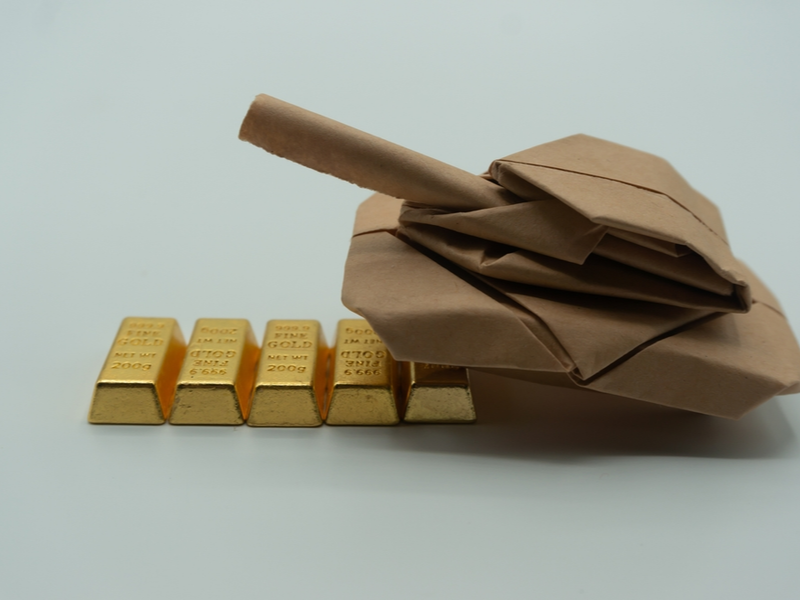
What is Gold Monetisation Scheme?
Gold is the staple status commodity of India. India is one of the largest importers of gold in the world and holds approximately of the total gold reserves. However, the majority of this gold is stored in the bank lockers with a return value only upon sale. The demand for gold in India has risen steadily over the past few decades but the prices for gold have increased multiple times over the years, especially during the recent pandemic when the gold prices reached unprecedented heights in the wake of market uncertainty.
In order to make optimum utilization of this invaluable asset, the Government of India has introduced the Gold Monetization Scheme in the year 2015. This scheme will allow the investors to earn returns on their gold which would have otherwise been idle as well as encourage them to invest in gold in any form. (bullion or jewellery). The gold will earn interest on the gold weight as it is lent to banks for a higher rate of interest.
Overview of GSM
The table below highlights some of the key aspects to know about GSM:
| Feature | Description |
| Eligibility | Any resident Indian including IndividualsHUFsTrustsMutual Funds/Exchange Trade Funds registered under SEBI (Mutual Fund) RegulationsCompaniesCharitable InstitutionsCentral GovernmentState GovernmentAny other entity owned by Central Government or State GovernmentJoint Accounts are also permitted |
| Entry age | For adults – Above 18 years |
| Fee Structure (Account Opening Fee & Maintenance Charges) | The minimum investment under the scheme is 10grams of raw gold.No maximum limit of investment.1.5% handling charges paid to designated banks by the Central Government and commission of 1% of the rupee equivalent to the amount of gold mobilized under the scheme. |
| Interest | Depending on the type of deposit |
| Exit option / Liquidation of policy | Allowed only after completion of lock-in period |
| Nomination Facility | This facility is available under GMS |
Benefits of GSM
The aim of GMS is to encourage investors to invest their gold with this scheme and earn interest over a period of time. This scheme also aims to eventually reduce the dependence of the country on gold imports. Some of the noteworthy benefits of GSM are:
- Encourages the deposit of idle gold held by households and institutions in India
- Helps the country reduce its reliance on imported gold for domestic consumption
- Provides a means for individuals and institutions to earn interest on their idle gold holdings
- Offers three options for gold deposit: Short Term Bank Deposit (STBD), Medium and Long Term Government Deposit (MLTGD), and Gold Metal Loan (GML)
- Allows for the redemption of gold deposits either in cash or gold, based on the option chosen at the time of deposit
- Provides assurance of purity and transparency in the testing of deposited gold
- Offers a tax exemption on interest earned from gold deposits
- Helps to channelize the idle gold held in the country towards productive purposes and helps to generate wealth
- The gold deposited is used to meet the domestic requirement of jewellery, coins, and bars
- The scheme helps to mobilize the gold held by households and temples, which can then be used for the country’s economic growth.
Highlights
- Risk
This investment is a relatively low-risk investment as the gold deposited is kept secured by the partner banks and the scheme is a government-backed scheme. The risk of the investment is linked to the value of gold in the market.
- Returns
The returns of the gold monetization scheme are in the form of interest that can be earned in the form of INR for short term gold deposits (STGD) or medium and long term gold deposits (MLTGD). The current rate of interest for STGD and MLTGD are mentioned below.
| STGD | MTGD | LTGD |
| At the discretion of the partner bank | 2.25% (decided by Central Government) | 2.50% (decided by Central Government) |
- Taxation
An investment in the gold monetization scheme is completely tax-free. The interest earned on the deposits as well as the increase in the value of the gold will not attract any income tax, wealth tax, or capital gains tax. This makes it a very attractive investment option for investors.
- Lock-in Limitations
The lock-in period under this scheme depends on the type of deposit made. The lock-in period for each category of deposits is tabled below.
| STGD | MTGD | LTGD |
| At the discretion of the partner bank | 3 years | 2.50% (decided by Central Government) |
- Withdrawals
The withdrawal from the scheme can be after the lock-in period and is in terms of gold or INR depending on the type of deposit. The details of the withdrawals are tabled below.
| STGD | MTGD | LTGD |
| In the form of INR or Gold at the discretion of the partner bank | In terms of INR | In terms of INR |
- Capital Protection
The gold deposited by the investors is assayed and the investor will be provided a deposit receipt of standard gold of 995 fineness. The capital investment is under a government-backed scheme and hence secured.
- Inflation Protection
Like many government-backed schemes, the gold monetization scheme also does not account for inflation in the returns provided under the scheme.
Types of deposits under GMS and their features
There are essentially two main categories of deposits under GMS namely, short term gold deposit (STGD) and medium and long term gold deposit (MLTGD). The details of these deposits are tabled below.
| CATEGORY | SHORT TERM GOLD DEPOSIT | MEDIUM TERM GOLD DEPOSIT | LONG TERM GOLD DEPOSIT |
| Minimum gold deposited | 10gms of raw gold (bars, coins, jewellery excluding stones and other metals)No maximum limit of deposit | 10gms of raw gold (bars, coins, jewellery excluding stones and other metals)No maximum limit of deposit | 10gms of raw gold (bars, coins, jewellery excluding stones and other metals)No maximum limit of deposit |
| Interest rate decided by | Partner Bank | Central Government | Central Government |
| Tenure | 1-3 years | 5-7 years | 12-15 years |
| Current Interest rates | As per Bank Discretion | 2.25% p.a. | 2.50% p.a |
| Penal Interest | At bank discretion | >3 and <5 (MTGD interest less 0.375%)>=5 and <7 (MTGD interest less 0.25%) | >5 and <7 (MTGD interest less 0.25%)>=7 and <12 (LTGD interest less 0.375%)>=12 and <15 (LTGD interest less 0.25%) |
| Minimum Lock-in | At bank discretion | 3 years | 5 years |
| Principal denominated in | Gold | Gold | Gold |
| Interest denominated in | INR | INR | INR |
Eligibility for GSM
Here are the eligibility criteria for the Gold Monetisation Scheme:
- Resident Indians, including individuals, HUFs, trusts, and companies, are eligible to participate in the scheme.
- The minimum deposit amount under the scheme is 30 grams of raw gold (bars, coins, or jewellery excluding stones and other metals).
- The gold must be of 995 fineness, or higher, and have been hallmarked by a Bureau of Indian Standards (BIS) licensed Assaying and Hallmarking Centre.
- Joint depositors are allowed under the scheme, with a maximum of four individuals per deposit.
- The scheme allows for deposits in the form of Short Term Bank Deposits (STBD), Medium and Long Term Government Deposits (MLTGD), and Gold Metal Loans (GML).
- Individuals and HUFs can avail tax exemptions on the interest earned on their gold deposits under the scheme.
- The gold deposited under the scheme will be credited to the depositor’s Gold Savings Account, which can be opened with any bank participating in the scheme.
- The gold deposited can be redeemed either in cash or gold, as per the depositor’s choice, on maturity of the deposit.
Account Setup Information
The process of setting up an account under GMS is explained below.
How to invest?
The pre-requisite for investing in GMS is having a savings or current account with a partner bank.
The steps to open a deposit under GMS with the partner bank is mentioned below.
- Visit the partner bank where the customer has a savings or current account.
- Fill the application form for GMS and get the counterfoil for the same and can then visit the bank’s partner Refinery Purity Testing Centre.
- The customer will have to furnish the counterfoil at the Refinery Purity Testing Centre.
- At this stage, they will have to submit their gold for the assaying and melting process.
- Post this process, the customer will be given a deposit receipt containing the Gold quantity with purity 995.
- The depositor will have to submit this receipt to the branch within 30 days
- The partner bank will provide the final deposit certificate on the day of deposit receipt submitted by the depositor or after completion of 30 days after the date of tendering the gold at the CPTC (Collection and Purity Testing Centre) whichever is later.
Key Takeaways
- The gold deposited will be melted down and the form will be different at time of redemption
- This scheme also includes the initiative by Prime Minister Narendra Modi, Indian Gold Coin, which aims to monetise the idle gold lying with citizens. The 24 karat gold is made as per BIS Standards by Metals and Minerals Trading Corporation of India (MMTC) that has high liquidity and cannot be duplicated as it comes with Tamper-proof packaging.
FAQs
1. Is gold received in the same form as it was deposited?
A. No. The gold deposited is assayed and melted, hence, it cannot be returned in the same form.
2. Can a joint account be opened under GMS?
A. Yes, depositors are allowed to open joint accounts under GMS.
3. How is the redemption amount received under MLGTD?
A. Under the MLGTD scheme, the amount received at the time of redemption will be provided in the following manner.
| Principal | In INR (equivalent to the value of gold at the time of redemption) or in gold |
| Interest | Paid in cash |
4. What is the minimum value of gold to be deposited under GMS?
A. The minimum value of gold to be deposited under GMS is 10 grams of raw gold (bars, coins, jewellery excluding stones and other metals)
Related Articles


























